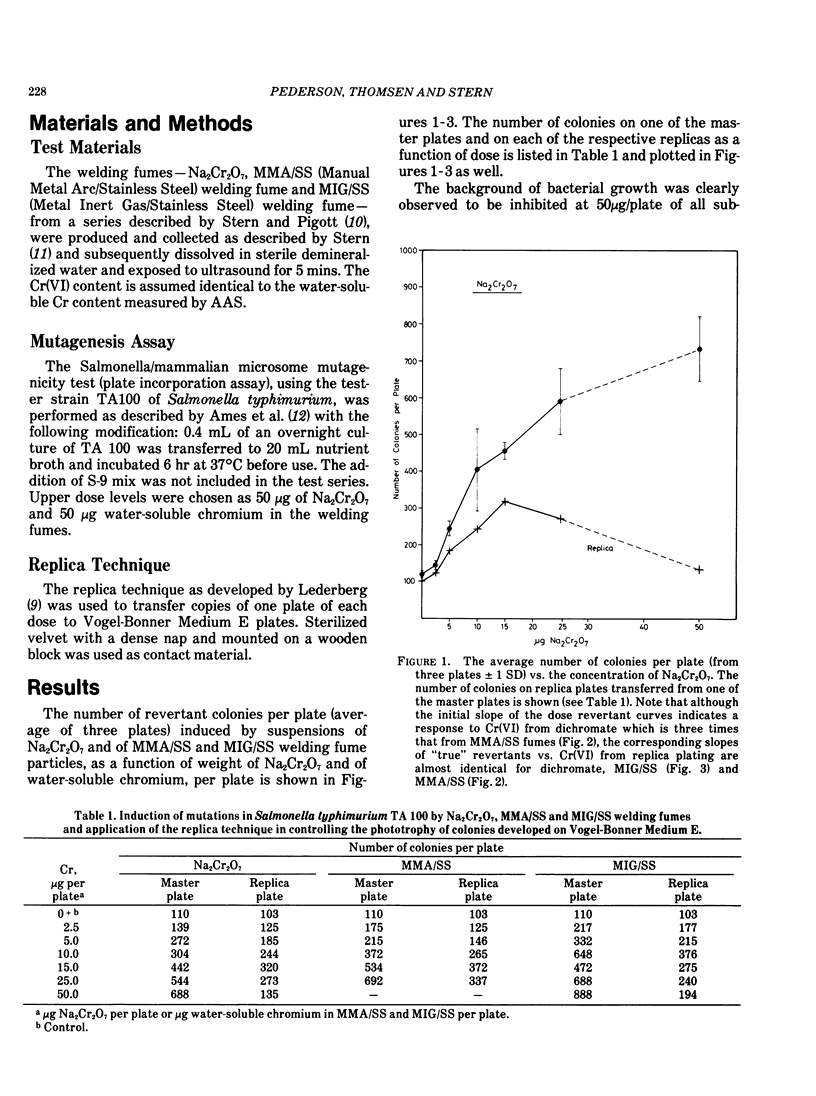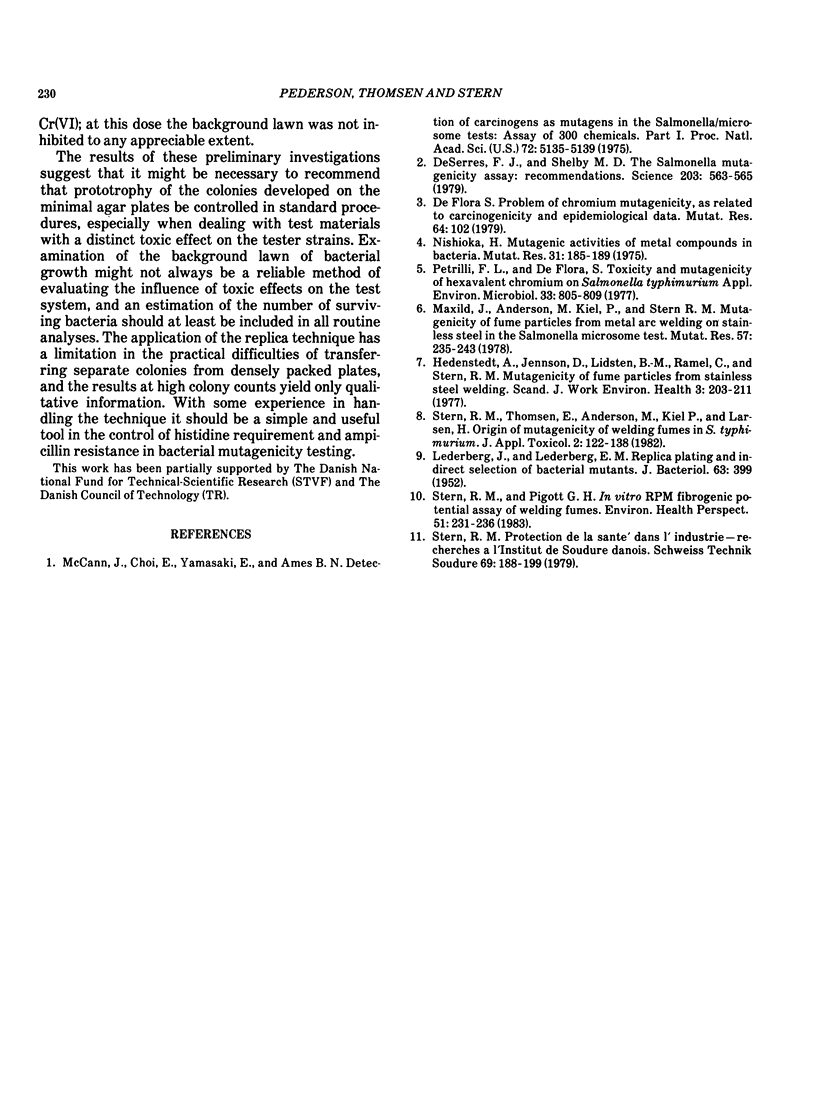Abstract
The replica plating method as developed by Lederberg has been used to differentiate between "true" and "false" histidine-requiring revertant bacterial colonies which develop on minimal agar plates in the Ames test. Strains of S. typhimurium LT2, TA 100, when exposed to either sodium dichromate or the fumes from the welding of stainless steel, develop colonies whose apparent numbers are directly in proportion to the Cr(VI) content per plate in both cases, over a wide dose range. Replica impressions of the resulting colonies were transferred to Vogel Bonner minimal agar plates and incubated for 48 hr at 37 degrees C. It was then observed that considerable numbers of "false" revertant colonies were obtained at those Cr(VI) doses which resulted in a pronounced toxic effect, albeit with an acceptable level of the bacterial background lawn. No morphological distinction between "true" and "false" revertant colonies could be made. Although it would appear that at low doses (i.e., low toxicity) the true mutagenicity of stainless steel welding fumes can be completely accounted for by the presence of Cr(VI), the dose range over which the mutagenicity assay is reliable cannot be estimated from examination of the background lawn or from an estimate of the degree of survival of the treated cultures. Thus there is raised a serious question concerning the reliability of quantitative data published in bacterial mutagenicity testing where replica testing of the histidine requirement of the resulting "revertant" colonies is not routinely made. It is suggested that the replica technique can easily be developed as a simple and useful tool for the control of histidine requirement and ampicillin resistance in routine mutagenicity testing.(ABSTRACT TRUNCATED AT 250 WORDS)
Full text
PDF



Selected References
These references are in PubMed. This may not be the complete list of references from this article.
- Hedenstedt A., Jenssen D., Lidestein B-M, Ramel C., Rannug U., Stern R. M. Mutagenicity of fume particles from stainless steel welding. Scand J Work Environ Health. 1977 Dec;3(4):203–211. doi: 10.5271/sjweh.2776. [DOI] [PubMed] [Google Scholar]
- LEDERBERG J., LEDERBERG E. M. Replica plating and indirect selection of bacterial mutants. J Bacteriol. 1952 Mar;63(3):399–406. doi: 10.1128/jb.63.3.399-406.1952. [DOI] [PMC free article] [PubMed] [Google Scholar]
- McCann J., Choi E., Yamasaki E., Ames B. N. Detection of carcinogens as mutagens in the Salmonella/microsome test: assay of 300 chemicals. Proc Natl Acad Sci U S A. 1975 Dec;72(12):5135–5139. doi: 10.1073/pnas.72.12.5135. [DOI] [PMC free article] [PubMed] [Google Scholar]
- Nishioka H. Mutagenic activities of metal compounds in bacteria. Mutat Res. 1975 Jun;31(3):185–189. doi: 10.1016/0165-1161(75)90088-6. [DOI] [PubMed] [Google Scholar]
- Petrilli F. L., De Flora S. Toxicity and mutagenicity of hexavalent chromium on Salmonella typhimurium. Appl Environ Microbiol. 1977 Apr;33(4):805–809. doi: 10.1128/aem.33.4.805-809.1977. [DOI] [PMC free article] [PubMed] [Google Scholar]
- Stern R. M., Pigott G. H. In vitro RPM fibrogenic potential assay of welding fumes. Environ Health Perspect. 1983 Sep;51:231–236. doi: 10.1289/ehp.8351231. [DOI] [PMC free article] [PubMed] [Google Scholar]
- de Serres F. J., Shelby M. D. The Salmonella mutagenicity assay: recommendations. Science. 1979 Feb 9;203(4380):563–565. doi: 10.1126/science.760206. [DOI] [PubMed] [Google Scholar]


